A particle mass m=0.1kg is released from rest from a point A of a wedge of mass M=2.4kg free to slide on a frictionless horizontal plane. The particle slides down the smooth face Ab of the wedge. When the velocity of th ewedge is 0.2m/s the particle in m/s relative to the wedge is :-
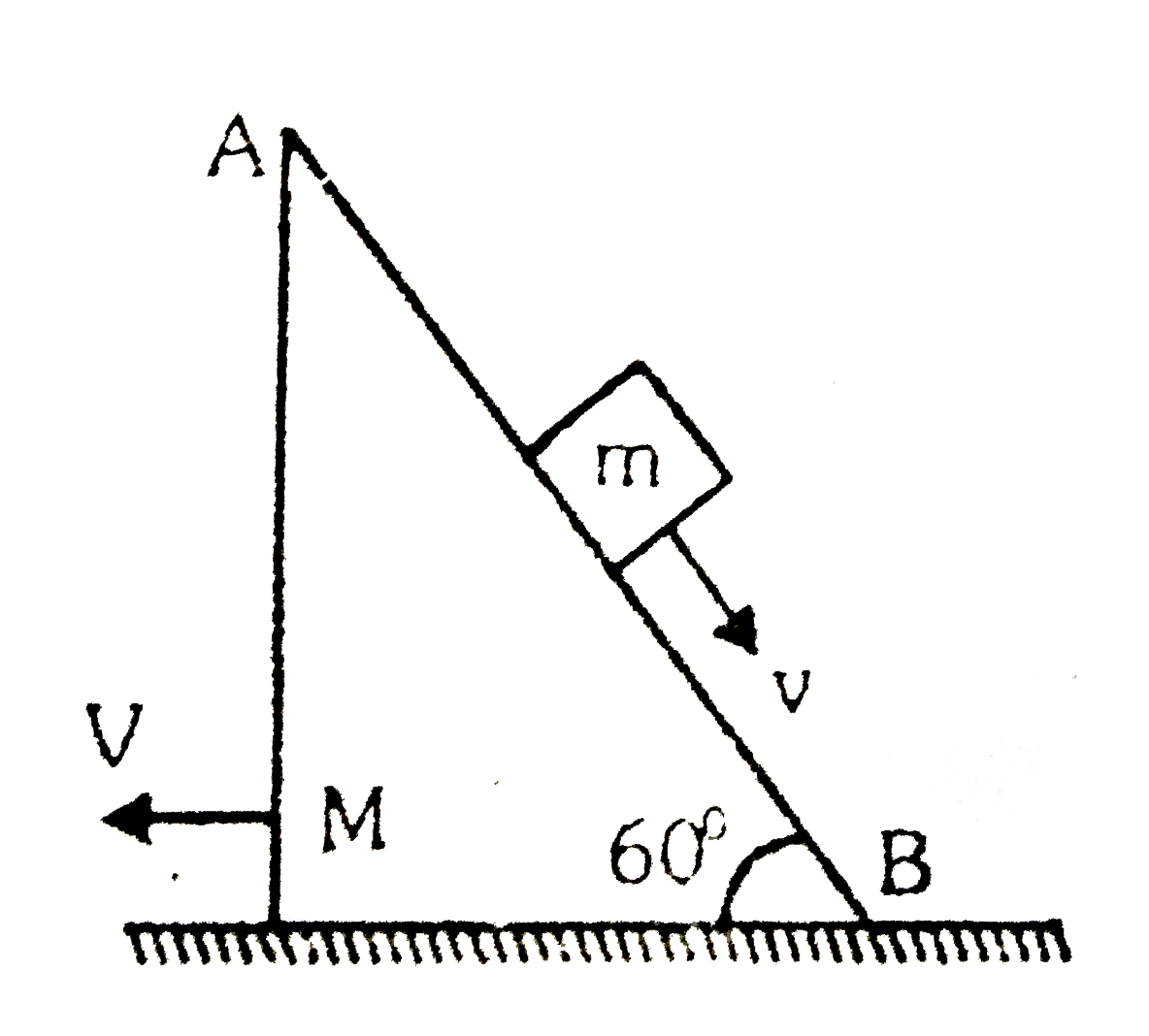
4.8
5
7.5
10
The correct Answer is:D
COLM:−MV+m(vcos60−V)=0⇒v=10m/s
Topper's Solved these Questions
- BOOK - ALLENCHAPTER - CENTRE OF MASSEXERCISE - EXERCISE-III42videos
CENTRE OF MASS
- BOOK - ALLENCHAPTER - CENTRE OF MASSEXERCISE - EXERCISE-IV A32videos
CENTRE OF MASS
- BOOK - ALLENCHAPTER - CENTRE OF MASSEXERCISE - EXERCISE-I40videos
CENTRE OF MASS
- BOOK - ALLENCHAPTER - BASIC MATHEMATICS USED IN PHYSICS &VECTORS EXERCISE - EXERCISE-IV ASSERTION & REASON11videos
BASIC MATHEMATICS USED IN PHYSICS &VECTORS
- BOOK - ALLENCHAPTER - ELASTICITY, SURFACE TENSION AND FLUID MECHANICSEXERCISE - Exercise 5 B (Integer Type Questions)3videos
ELASTICITY, SURFACE TENSION AND FLUID MECHANICS
Similar Questions
A particle of mass m is released from rest from a point A of a wedge of mass 4m free to slide on a frictionless horizontal plane. The particle slides down the smooth face AB of the wedge. When the velocity of the wedge is 0.2 m/s the velocity of the particle in m/s relative to the wedge is
View SolutionA particle of mass m is released from rest from a point A of a wedge of mass 4m free to slide on a frictionless horizontal plane. The particle slides down the smooth face AB of the wedge. When the velocity of the wedge is 0.2 m/s the velocity of the particle in m/s relative to the wedge is
View Solution
Knowledge Check
- Question 1 - Select One
A block of mass 1 kg is released from the top of a wedge of mass 2 kg. Height of wedge is 10 meter and all the surfaces are frictionless. Then
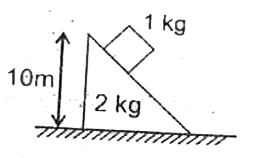 ADisplacement of centre of mass of system in vertical direction is zero.BDisplacement of centre of mass of system, vertically downwards, is 103m,CRation of normal reaction between block and wedge to the acceleration of wedge w.r.t ground is 4 (in kg).DMomentum of system will not be conserved in horizontal direction.
ADisplacement of centre of mass of system in vertical direction is zero.BDisplacement of centre of mass of system, vertically downwards, is 103m,CRation of normal reaction between block and wedge to the acceleration of wedge w.r.t ground is 4 (in kg).DMomentum of system will not be conserved in horizontal direction. - Question 2 - Select One
A block of mass 2kg slides down the face of a smooth 45∘ wedge of mass 9kg as shown in the figure. The wedge is placed on a frictionless horizontal surface. Determine the acceleration of the wedge.
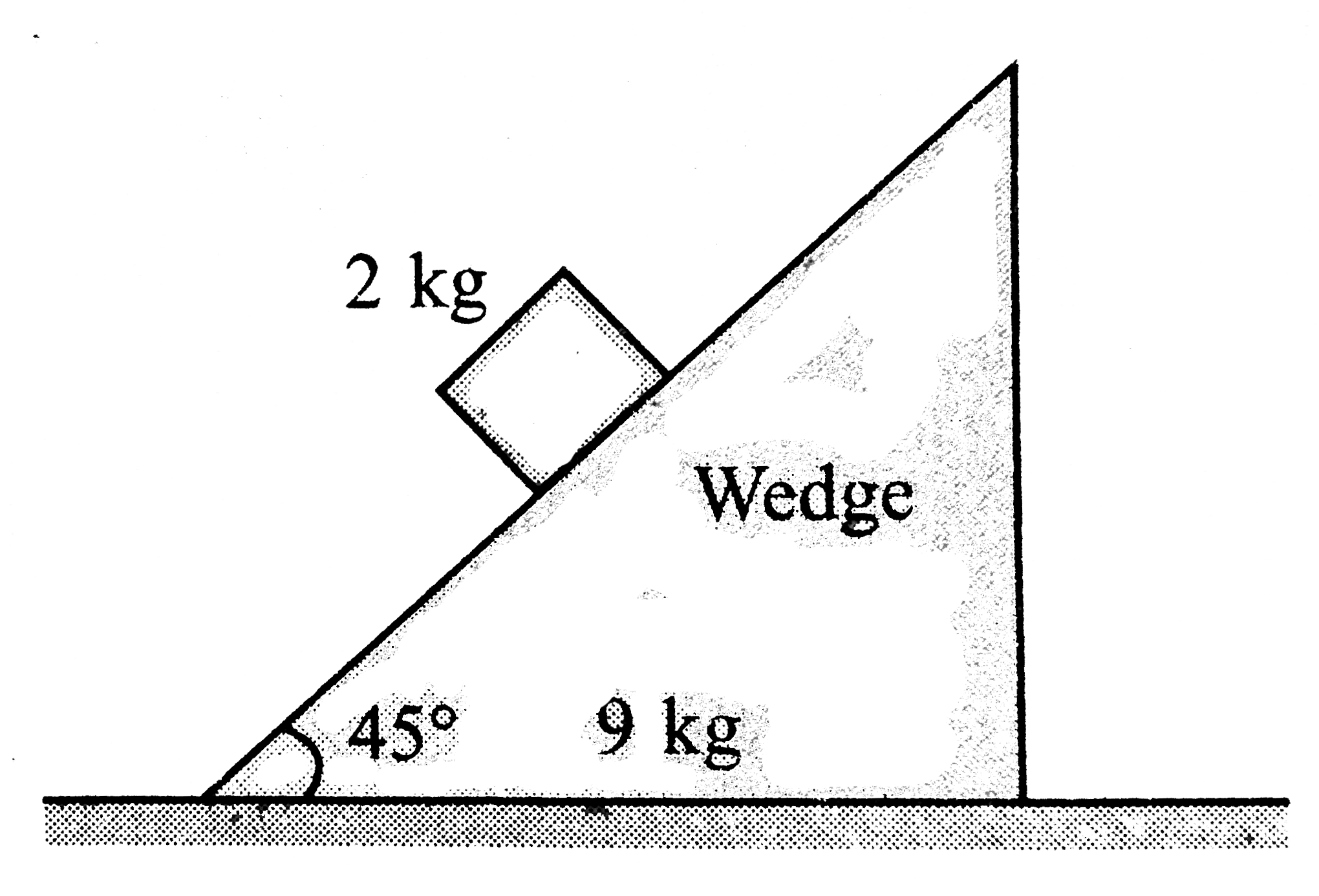 A2ms−2B11√2ms−2C1ms−2Dnone of these
A2ms−2B11√2ms−2C1ms−2Dnone of these - Question 3 - Select One
A small ball ( uniform solid sphere ) of mass m is released from the top of a wedge of the same mass m. The wedge is free to move on a smooth horizontal surface. The ball rolld without sliding on the wedge. The required height of the wedge are mentioned in the figure.
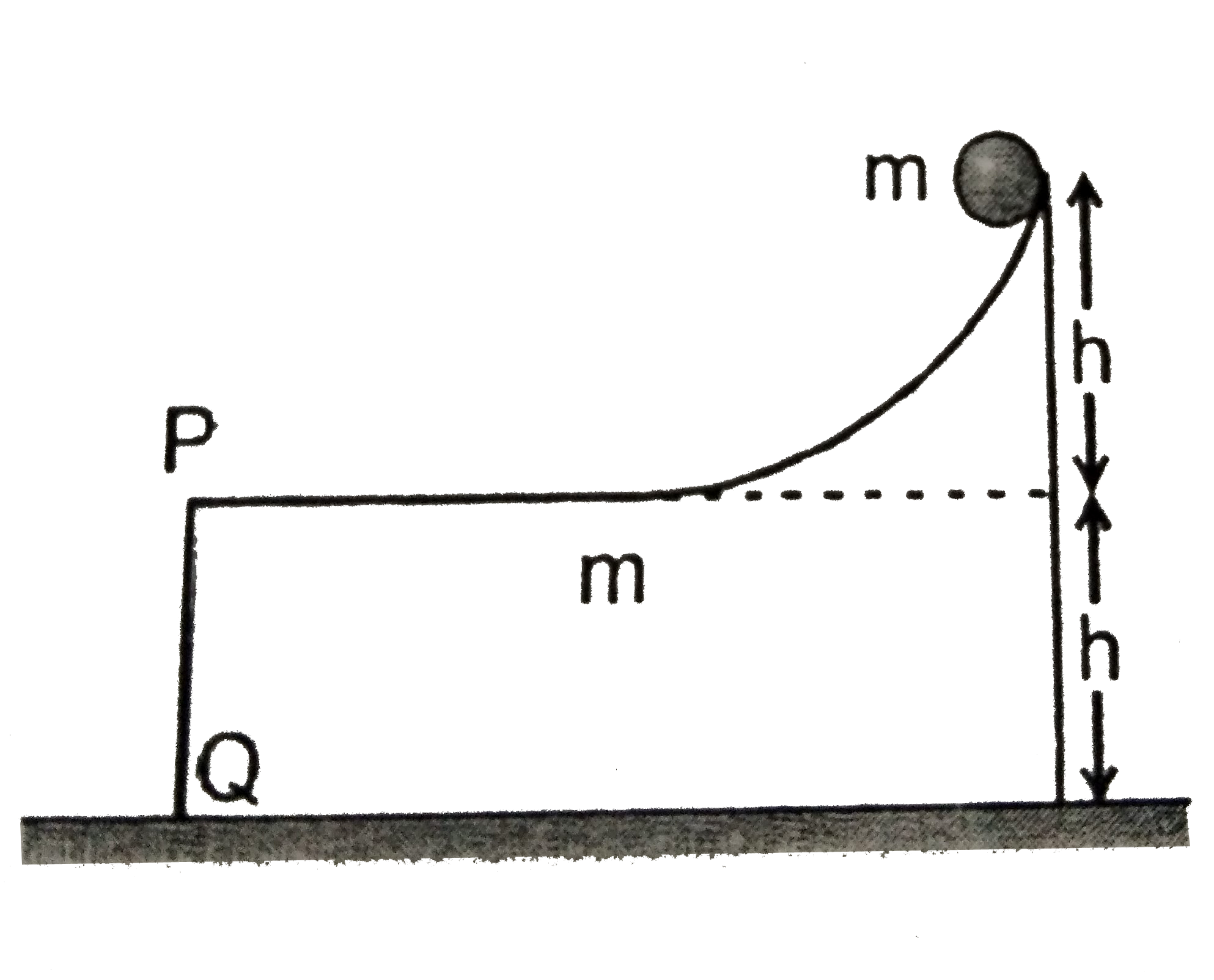
The speed of the wedge when the ball is just going to leave the wedge at point 'P' of the wedge isA√5gh9B√ghC√5gh6DNone of these
A particle of mass m is released from rest from a point A of a wedge of mass 4m free to slide on a frictionless horizontal plane.The particle slides down the smooth face AB of the wedge.When the velocity of the wedge is 0.2m/s the velocity of the particle in m/s relative to the wedge is
View SolutionA particle of mass m is released from rest from a point A of a wedge of mass 4m free to slide on a frictionless horizontal plane.The particle slides down the smooth face AB of the wedge.When the velocity of the wedge is 0.2m/s the velocity of the particle in m/s relative to the wedge is qquad 2m/s<(1)/(4) .
View SolutionA particle of mass m=0.1kg is released from.rest from a point A of a wedge of mass M=2.4kg. The wedge is free to slide on a frictionless horizontal plane. The particle slides down the smooth face AB of the wedge. When the velocity of the wedge is 0.2ms, the velocity (in ms ) of the particle relative to the wedge is
'(##CEN_KSR_PHY_JEE_C08_E01_013_Q08##)'View SolutionA particle of mass m is placed at rest on the top of a smooth wedge of mass M, which in turn is placed at rest on a smooth horizontal surface as shown in figure. Then the distance moved by the wedge as the particle reaches the foot of the wedge is :
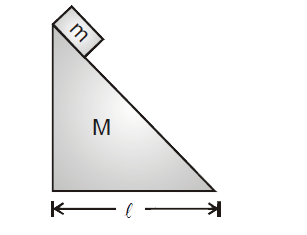 View Solution
View SolutionA block of mass m is released from the top of a wedge of mass M as shown in figure. Find the displacement of wedges on the horizontal ground when the block reaches the bottom of the wedges. Neglect friction everywhere.
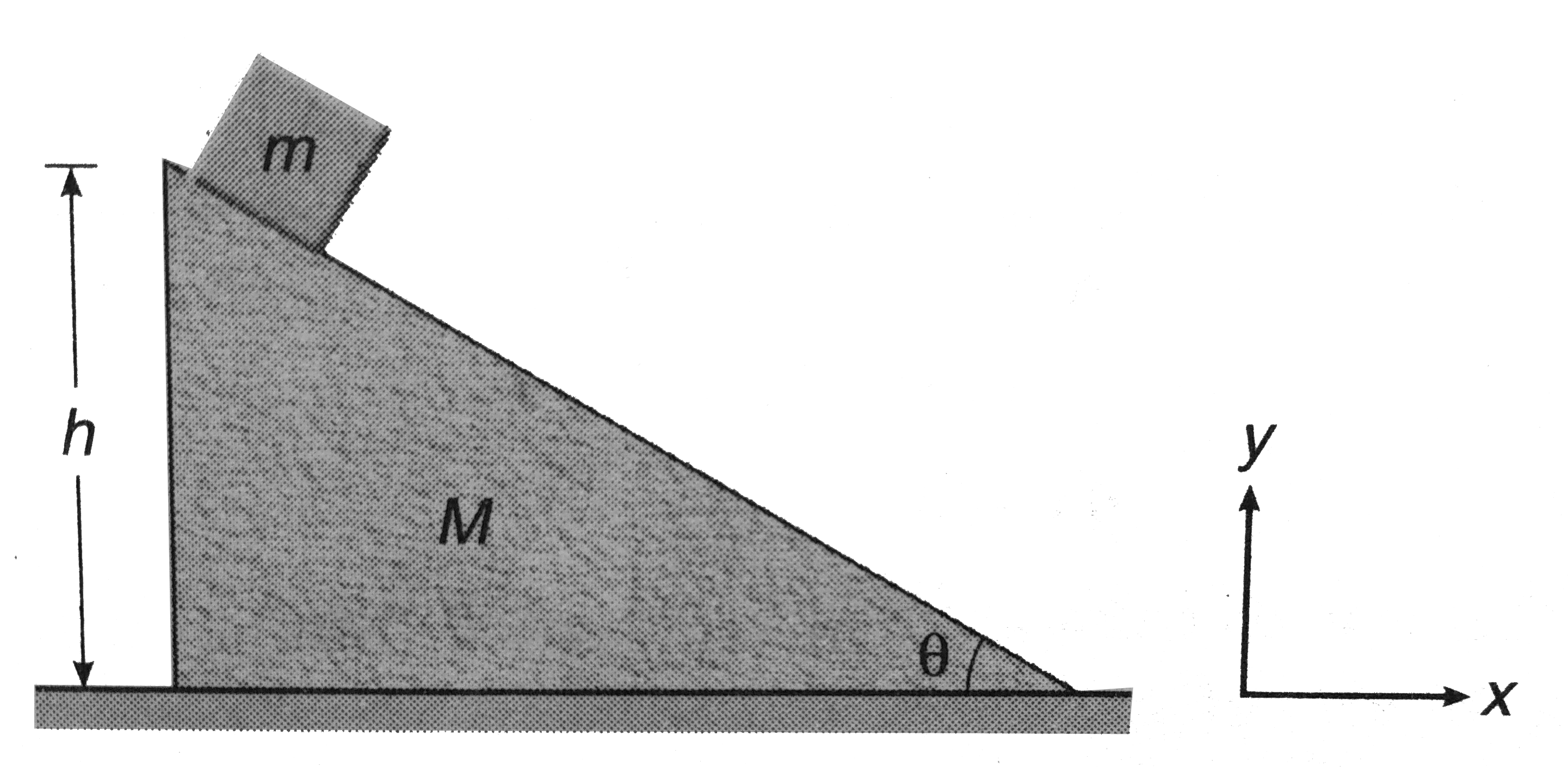 View Solution
View Solution

